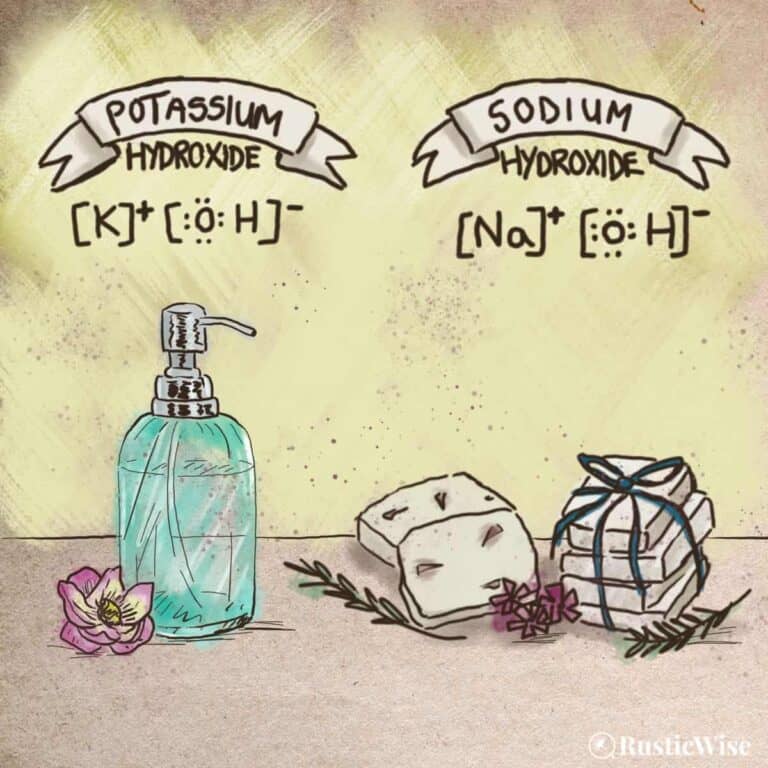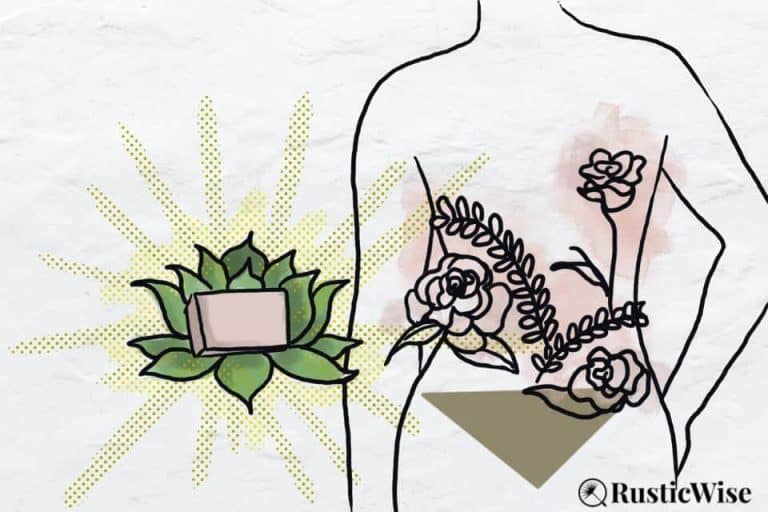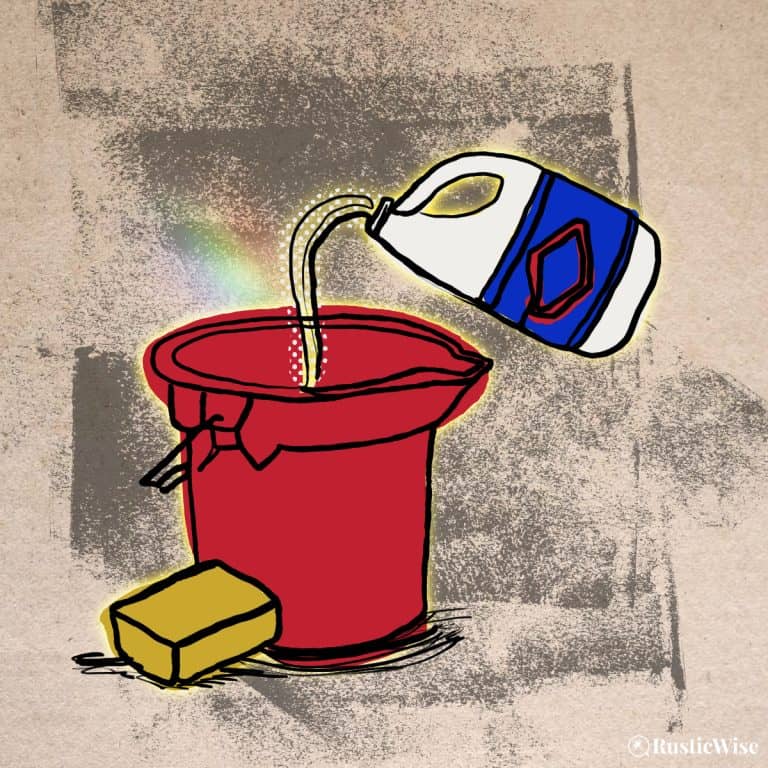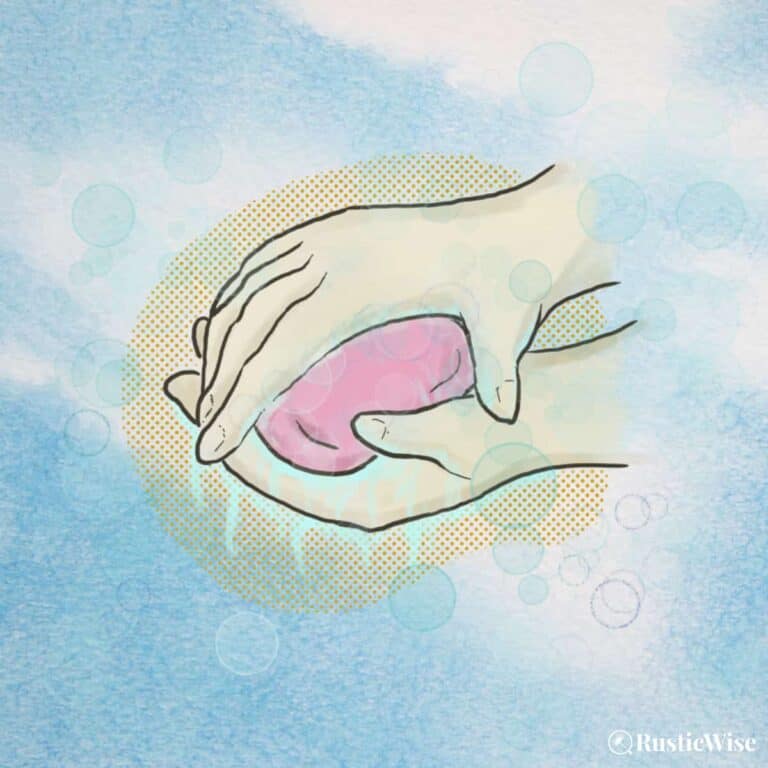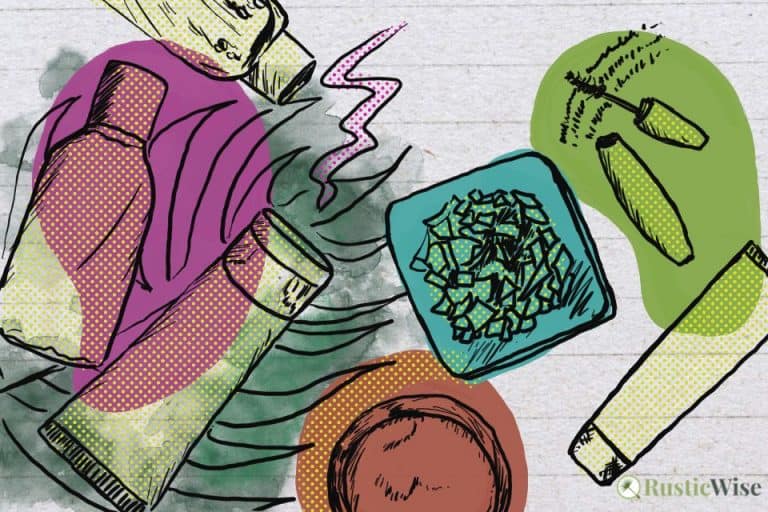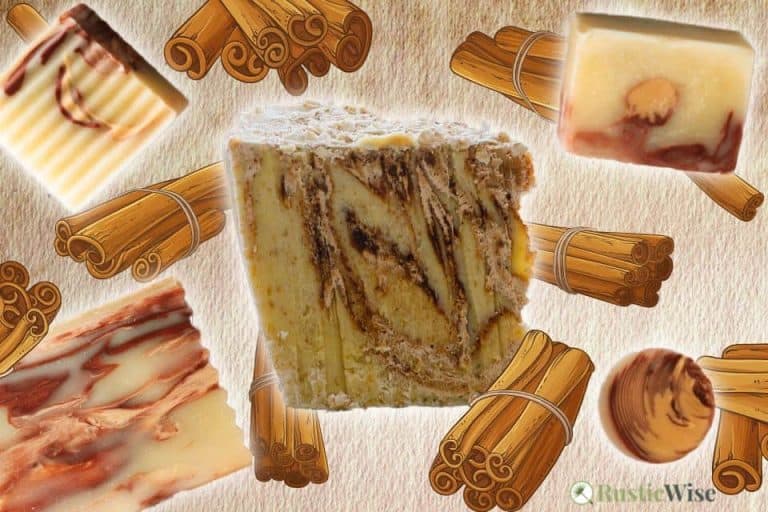Does Soap Kill Fungus? How To Keep Your Home and Body Clean
Fungi are everywhere, and they can easily spread from person to person or from surface to surface. Keeping your home and body clean is essential to prevent the growth and spread of these microorganisms.
Does soap kill fungus effectively? Simply put, no soap does not actually kill fungus, but rather works to remove germs from skin or other surfaces. Soaps and detergents are surfactants which help to more effectively remove certain germs, which lowers the number of microbes to a safer level.
Let’s take a deep dive into the relationship between soap and fungus. We’ll discuss the common types of fungi and how they can be prevented. We will also provide tips on how to keep your home and body clean to reduce the risk of fungal infections or mold buildup.
If you want to learn more about how to protect yourself and your loved ones from these pesky organisms, keep reading!
What exactly is fungus?
The fungi family comprises roughly 144,000 species of organisms that can be found all around us—in air, soil, water, and on skin. Common types of fungi include mildew, mold, mushrooms, rust, and yeasts.¹
On skin, common fungal infections include athlete’s foot and ringworm.
Not all fungi are bad. Healthy mushrooms, yeasts used to ferment foods and beverages, and many medicines (such as penicillin) are an integral part of daily life.
Many fungal spores are harmless. It’s when certain environmental conditions exist that fungal growth can pose a problem.
For example, too much moisture and humidity in a home can cause mold growth. A common yeast found in the body, Candida albicans, is harmless if there’s a healthy balance in the body’s microbes. But when the body’s microbes are out of whack, C. albicans develops into candidiasis, commonly known as thrush.
Does soap kill fungus effectively?
While soap does not completely kill fungus, it can help to remove some of it. Soap (together with the mechanical action of rubbing or scrubbing) works by reducing the surface tension of water and enabling certain particles such as oil, dirt, and other bacteria to more easily wash away.
However, it’s important to note that soap alone is not enough to completely eliminate a fungal infection or fungal growth.
Soap can help remove some of the mold spores and fungal particles on surfaces, but it’s not strong enough to kill it off. To thoroughly eliminate a fungal infection or infestation, it’s important to use a stronger cleaning agent like chlorine bleach or hydrogen peroxide in certain situations. These disinfectants will help prevent the spread of fungal particles.
Indoors, mold spores are all around us and only grow and latch onto surfaces that are warm and moist, and have a carbon source (such as building materials). According to the U.S. Environmental Protection Agency (EPA), it’s impossible to completely eradicate all mold spores indoors.² To minimize mold or mildew growth, it’s important to reduce household moisture and humidity.
With skin infections, soap will not kill the fungal infection. Instead, you’ll need topical creams or treatments with anti-fungal properties. In order to fully treat a fungal infection, it is important to use antifungal medications as directed by a healthcare professional.
Maintaining good hygiene practices, such as using clean towels and avoiding sharing personal items, can help to prevent the spread of fungal infections.
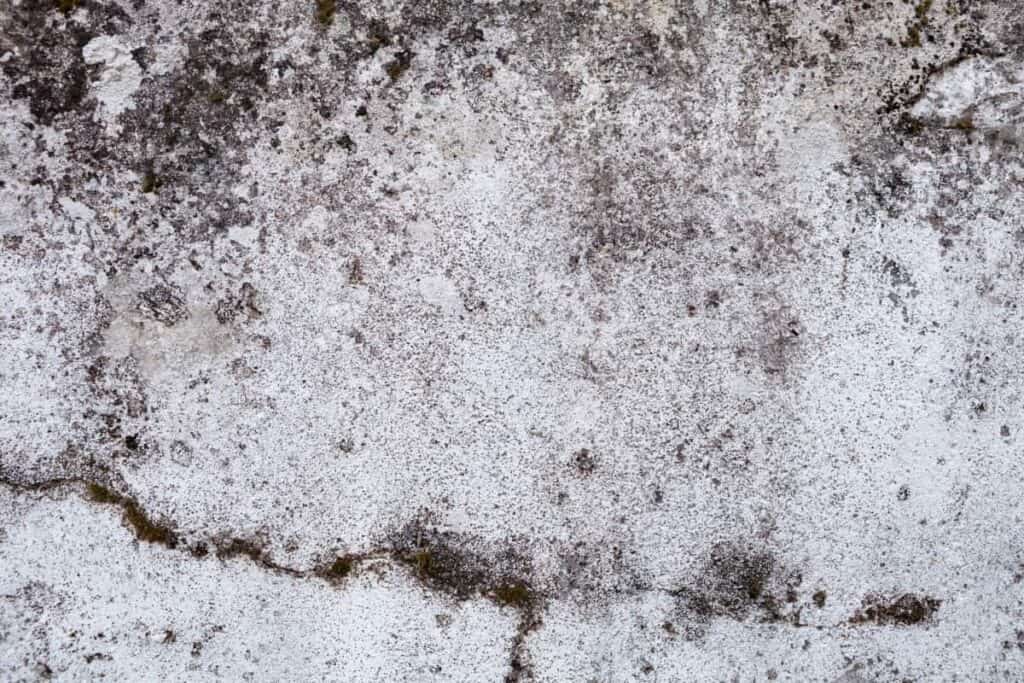
Credit: Vector State
Does antibacterial soap work better than regular soap?
No, you don’t need to use a commercial antibacterial soap to rid your skin of bacteria. Washing your hands with antibacterial soap is NOT more effective than using plain soap and water, according to the U.S. Food & Drug Administration (FDA). While products labelled as “antibacterial” are touted as being stronger, this does not hold up to the science.³
Triclosan and triclocarban, two ingredients found in commercial antibacterial soaps, were banned by the FDA in 2016. The reason for this? Manufacturers could not prove that these added ingredients were more effective at cleaning than regular soaps, nor could they support their long-term safety.
Tip: More important than the type of soap you use to wash your hands is your washing technique. Make sure to wet and lather your hands using soapy water, and scrub for at least 20 seconds. Make sure to scrub around wrists and between fingers as well!
Fungus around the house
The most common forms of fungi around the home are mold and mildew. It’s no surprise that bathrooms are common places for fungal growth from the hot steam released from long showers and baths.
The best way to prevent the spread of fungal spores around the house is to minimize the root causes of mold and mildew growth: high humidity and moisture. Mold and mildew thrives in a moist environment.
The EPA recommends the following tips when dealing with household mold:²
- Act quickly: The longer you leave mold, the more it spreads and damages whatever surface it’s attached to.
- Leave large problems to the pros: The EPA recommends you only tackle small mold issues yourself—those that measure less than 10 square feet. Larger issues should be left to mold remediation services.
- Fix any leaks: Any leaking faucets or drips should be dealt with right away. Moisture issues are the root cause of mold issues.
- Protect yourself: Wearing a respirator or an N-95 mask can protect you from inhaling mold spores. Remember to use gloves and goggles, too.
- Use detergent and water first: The EPA suggests using detergent and water to scrub off mold on hard surfaces. Dry the area thoroughly and ventilate the room.
- Use bleach only when necessary: As a general guideline, the EPA does not recommend using chlorine bleach to kill mold or fungus, as bleach can be harmful when inhaled. Using bleach is sometimes recommended in severe situations such as heavy flooding.
- Improve ventilation: Crack open a window to introduce fresh air, use fans in bathrooms, and other forms of indoor air circulation to boost ventilation.
Tip: What’s a good humidity level for your home? Most sources recommend an indoor humidity of 40 percent or lower to minimize bacterial growth.
Banishing mold in the kitchen
Green fuzzy stuff growing in a container of last week’s leftovers? Having mold grow on food is nothing new, but are you taking the proper precautions to minimize the spread of spores?
After you’ve safely composted or tossed the moldy food in question, you can keep the inside of your fridge clean by cleaning it regularly with 1 tablespoon of baking soda mixed into 1 quart (1 liter) of water. Rinse with water and dry with a clean cloth.⁴
What if you see visible mold on the rubber trim inside your refrigerator? The USDA recommends using a solution of 3 teaspoons of bleach to 1 quart (1 liter) of water to scrub away visible mold.⁴
Laundry tips for killing fungus
Fungus can be a common problem in laundry, especially if you live in a humid environment. Or maybe you’re trying to disinfect clothing that has been worn by someone with a fungal infection.
To get rid of fungus, there are several laundry tips you can follow:
- Separate the fungal-infected laundry from other clothing items and wash separately.
- Use hot water and a high-quality laundry detergent to wash your clothes. Hot water can help kill the fungus, while a good detergent can remove any spores that may be present.
- For good measure, you can add a cup of white vinegar to the rinse cycle. Vinegar is a mild disinfectant that also brightens and softens fabrics, as well as remove odors. Or you can add ½ cup of baking soda (which also helps to deodorize and brighten clothing) to your wash cycle.
- Another tip is to dry your clothes on high heat, as this can also help kill any remaining spores.
- Finally, wash your clothes regularly and avoid leaving damp items in piles for too long, as this can encourage fungal growth.
By following these tips, you can keep your laundry fungus-free and ensure that your clothes are clean and daisy-fresh!
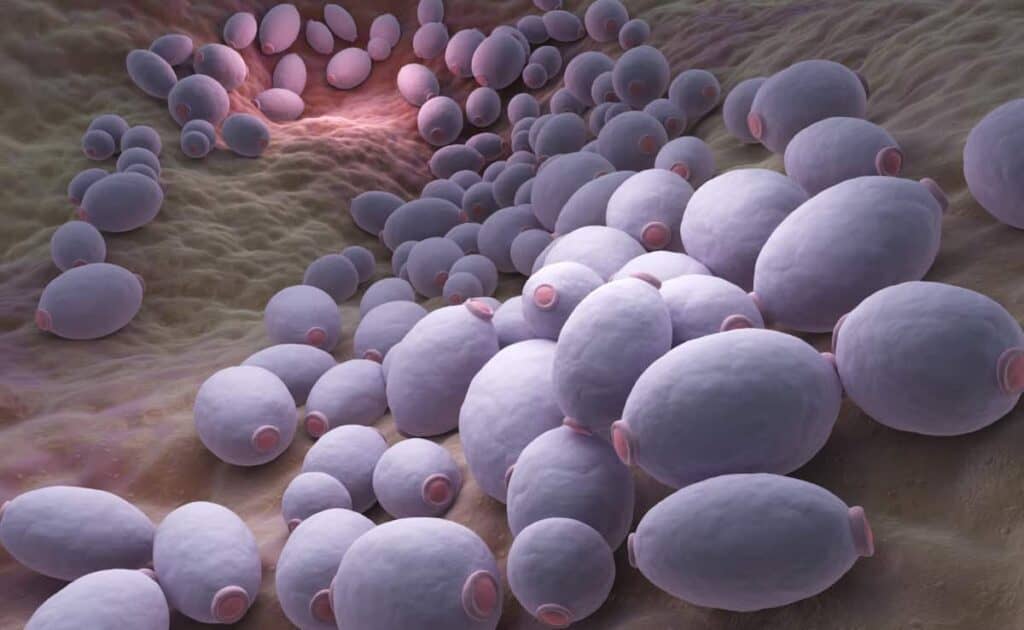
Credit: Vector State
Fungal growth on skin
Fungal infections are a common problem that affects millions of people worldwide. Athlete’s foot is a common type of skin fungus that can be both uncomfortable and unsightly.
Does regular soap work on the body and kill the fungal infection? What about antifungal soap?
Athlete’s foot (also called Tinea Pedis) is a type of ringworm (tinnea means ringworm). It’s characterized by itchy, stinging feet, and rashes on all areas of the feet, especially between the toes.
According to the Cleveland Clinic, the best treatment of athlete’s foot is a prescription cream, gel, ointment, or powder that contains active ingredients such as: clotrimazole, miconazole, tolnaftate or terbinafine. Pills are also available and commonly contain fluconazole, itraconazole or terbinafine.⁵
To treat athlete’s foot, it’s best to wash the affected area once a day with soap and water and allow them to dry. As this fungal disease is contagious, it’s best to avoid sharing towels. Wear sandals in the locker room and allow your feet plenty of air circulation as fungus thrives in a moist environment common in sweaty socks and shoes.
Regular soap will help cleanse the skin. You can also find special soaps targeted to athlete’s foot and other common infections.
Antifungal soaps often contain essential oils with antimicrobial properties, along with an active fungus-fighting ingredient. These can help a fungal infection in its early stages, or in mild cases, but stronger prescription creams or pills are often needed for more severe cases.
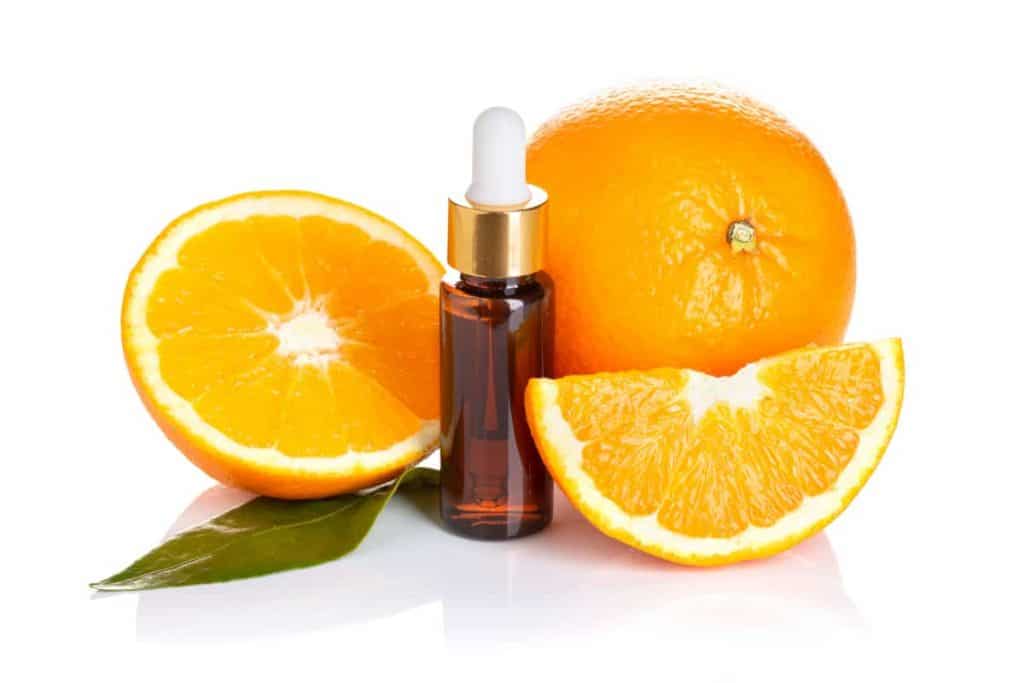
Natural ways to kill fungus
There are several natural remedies that can kill fungus, namely some essential oils.
Note: While these plant-based oils may prevent or impede the growth of bacteria, they many not completely kill fungus on skin.⁵
Here are a few essential oils with antifungal properties:
- Tea tree oil: A popular antiseptic oil that can help to kill fungi on the skin, nails, and hair.
- Bitter orange oil: Bitter orange’s antifungal properties is often used topically to treat ringworm, athlete’s foot, and jock itch.
- Peppermint oil: A refreshing, aromatic oil with stimulating and antiseptic properties.
- Eucalyptus oil: You’re likely familiar with the scent of eucalyptus as it’s often used in cold remedies. The oil has potent antiseptic qualities.
- Garlic oil: A special compound found in garlic called ajoene can help stop the spread of bacterial growth.⁵
👉 If you like this post, see other Timeless Cleaning Tips You Need To Know. 🌟
Would you like more timeless tips via email?
Fun tips to help you live an independent, self-sustaining lifestyle. Opt-out at any time.


References
- Britannica, Fungus, https://www.britannica.com/science/fungus. Accessed March 2023.
- U.S. Environmental Protection Agency (EPA), A Brief Guide to Mold, Moisture and Your Home, https://www.epa.gov/mold/brief-guide-mold-moisture-and-your-home. Accessed March 2023.
- U.S. Food & Drug Administration (FDA), “Antibacterial Soap? You Can Skip It, Use Plain Soap and Water,” https://www.fda.gov/consumers/consumer-updates/antibacterial-soap-you-can-skip-it-use-plain-soap-and-water. Accessed March 2023.
- U.S. Department of Agriculture (USDA), How can you minimize mold growth?, https://ask.usda.gov/s/article/How-can-you-minimize-mold-growth. Accessed March 2023.
- Cleveland Clinic, Athlete’s Foot (Tinea Pedis), https://my.clevelandclinic.org/health/diseases/22139-athletes-foot-tinea-pedis. Accessed March 2023.

Author: Theresa Tesolin
Theresa is co-founder of RusticWise. She helps people unleash their inner DIY spirit by encouraging them to get dirty and make or grow something from scratch.


